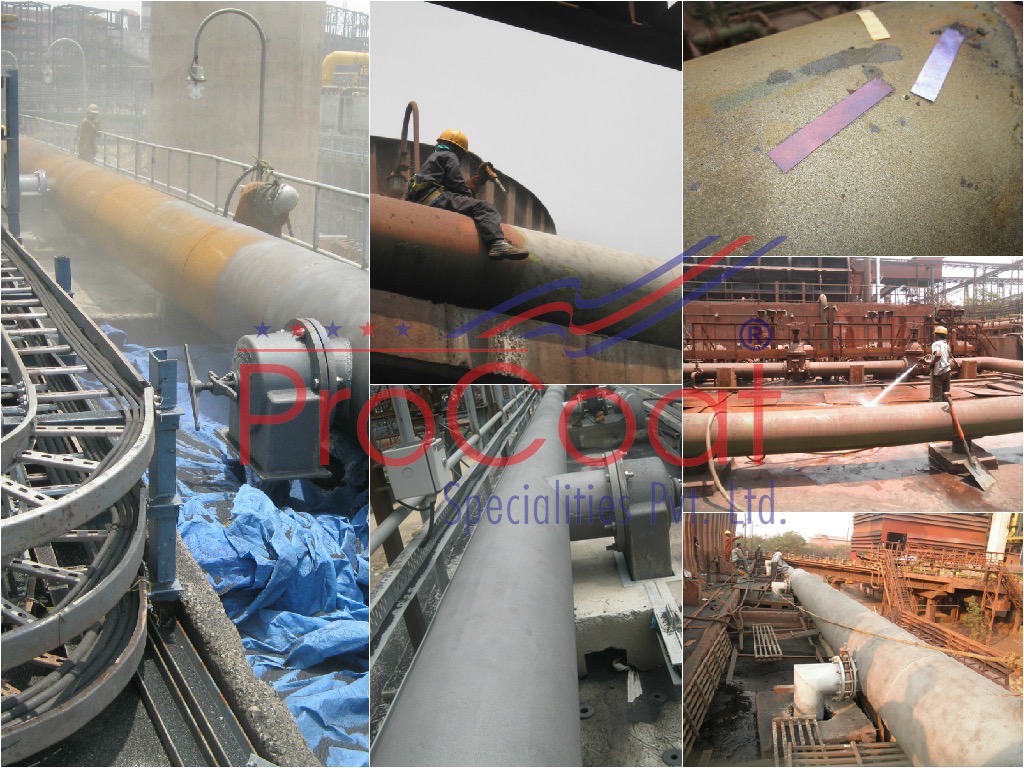External surface of these header pipelines are experiencing severe degree of corrosion as these are coming in contact with fumes of chemicals emanated from the nearby process vessels and presence of moisture in the atmosphere. On an account of the prevailing corrosion, heavy loss of metal is observed over the pipeline surface leading to pitting corrosion.
Chipping with hammer over the areas where heavy loss of metal flaking has taken place was carried out initially to remove lose rust deposits. Later, copper slag blasting was done on the entire header pipeline surface to remove further rust layer, followed up with water jet cleaning in order to neutralize the surface from adsorbed contaminants. Once the surface was dried up, second round of copper slag blasting was carried out to achieve the desired surface roughness essential for the application of coating.
Coating was applied all over the prepared surface using nylon rollers and brushes to the recommended thickness. Deposition of essential thickness was cross- checked using the Elcometer WFT Gauge.
Once the coating was cured, Dry Film Thickness was measured to make sure the applied coating is developed to the same that corresponds to Wet Film Coating Thickness.
These pipelines are mounted at various locations erected at different heights which ran through several lengths all across the plant. So in order to access entire surface of these pipelines, various scaffolding systems and safe accessing methods were incorporated to ensure quality application system. As per the requirements of the client, at few selected places over and top of the ProCoat Corrosion Resistant Coating System a colour coding top coat was applied that meets the industrial norms.






